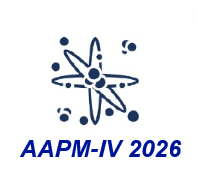Mathematical Modeling and 3D Visualization of Large-Scale Flooding Dynamics Using OpenFOAM: Case Study of the Naryn River Floodplain
Abdikerim Kurbanaliev is a prominent scholar in fluid dynamics and computational modeling, particularly known for his work on simulating large-scale hydrodynamic phenomena in complex environments. As a Doctor of Physical and Mathematical Sciences specializing in Mechanics of Liquid, Gas, and Plasma, his research focuses on advanced mathematical modeling techniques to address real-world challenges in fluid mechanics and environmental hydrology.
Fuzzy assessment of technological risks in the main oil pipeline
Dr. Cavida Damirova is a highly qualified academic and researcher at Azerbaijan State Oil and Industry University (ASOIU) in Baku, Azerbaijan. She holds a Doctor of Philosophy in Engineering (Ph.D. Eng.) and serves as an Assistant Lecturer in the Department of Management and System Engineering, as well as in the Department of Electronics and Automation at ASOIU. Her research focuses on risk assessment, management, and advanced technological solutions in the oil and gas industry, particularly concerning pipeline safety and operational efficiency. As a keynote speaker, Dr. Damirova brings expertise in the application of fuzzy logic methodologies for assessing and mitigating technological risks in main oil pipelines. Her work addresses the critical challenge of managing uncertainties and expert judgments in risk analysis, which is paramount in the midstream sector of the oil and gas industry.
Analysis of the limits of applicability of a photomultiplier as part of a laser Doppler anemometer



